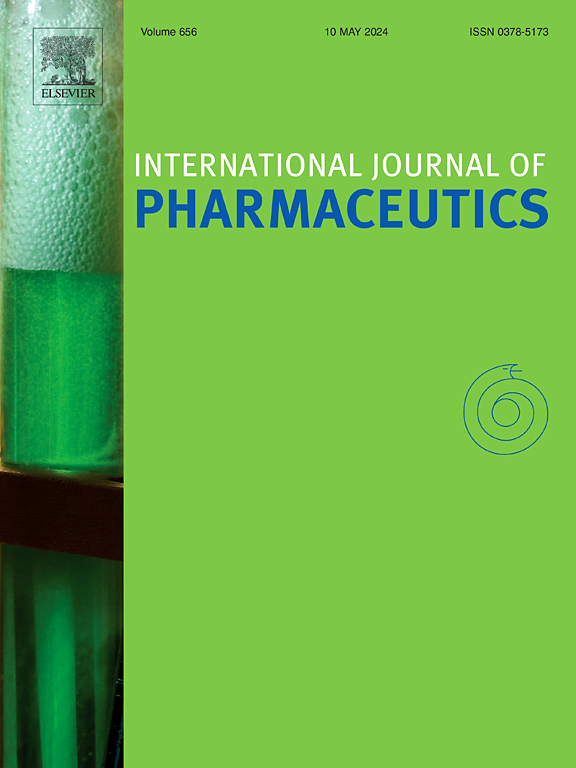Polysaccharide-based microneedles for advanced wound healing: recent advances and future challenges
IF 5.2
2区 医学
Q1 PHARMACOLOGY & PHARMACY
引用次数: 0
Abstract
Wound healing is a complex, dynamic, and tightly regulated biological process orchestrated by intricate cellular signalling pathways. Both acute and chronic wounds present significant therapeutic challenges, driving the demand for innovative and effective treatment modalities. The existing treatment options fail to address the challenges associated with conventional dosage forms, such as poor skin penetration and low bioavailability. Microneedle (MN) technology has emerged as a minimally invasive, highly efficient platform for localised drug delivery, offering the potential to accelerate and enhance tissue repair. Among the diverse materials investigated for MN fabrication, polysaccharide-based biodegradable polymers have attracted particular interest owing to their exceptional biocompatibility, biodegradability, and intrinsic biological activities. This review provides an in-depth analysis of natural polysaccharides (e.g., chitosan, alginate, hyaluronic acid) and synthetic polysaccharides (e.g., polylactic acid, polycaprolactone, PLGA) employed in MN-assisted wound healing. In this review, authors also highlighted the roles of polysaccharides in modulating key phases of the healing cascade, namely inflammation, proliferation, and remodelling, via critical signalling pathways such as NF-κB, PI3K/Akt, and TGF-β. These multifunctional properties of marine, plants, and animal-derived polysaccharides are also explored, particularly their antibacterial, anti-inflammatory, and pro-angiogenic effects when incorporated into MN systems. By enabling targeted, sustained, and responsive therapeutic delivery, polysaccharide-based MNs represent a transformative strategy for advanced wound care. The future research should focus on scalable manufacturing techniques, the integration of stimuli-responsive elements, and robust clinical evaluation to unlock the full potential of these polysaccharide-mediated microneedles as next-generation wound healing platforms.

用于高级伤口愈合的多糖微针:最近的进展和未来的挑战。
伤口愈合是一个复杂的、动态的、受到严格调控的生物过程,由复杂的细胞信号通路精心策划。急性和慢性伤口都面临着重大的治疗挑战,推动了对创新和有效治疗方式的需求。现有的治疗方案未能解决与传统剂型相关的挑战,例如皮肤渗透性差和生物利用度低。微针(MN)技术已经成为一种微创、高效的局部给药平台,具有加速和增强组织修复的潜力。在研究锰制造的各种材料中,基于多糖的可生物降解聚合物由于其特殊的生物相容性,生物可降解性和内在的生物活性而引起了特别的兴趣。本文综述了天然多糖(如壳聚糖、海藻酸盐、透明质酸)和合成多糖(如聚乳酸、聚己内酯、PLGA)在mn辅助伤口愈合中的应用。在这篇综述中,作者还强调了多糖通过NF-κB、PI3K/Akt和TGF-β等关键信号通路,在调节愈合级联的关键阶段,即炎症、增殖和重塑中的作用。这些海洋、植物和动物来源的多糖的多功能特性也被探索,特别是它们的抗菌、抗炎和促血管生成的作用,当合并到MN系统。通过实现靶向,持续和反应性的治疗递送,基于多糖的MNs代表了高级伤口护理的变革战略。未来的研究应该集中在可扩展的制造技术、刺激反应元件的整合和强大的临床评估上,以释放这些多糖介导的微针作为下一代伤口愈合平台的全部潜力。
本文章由计算机程序翻译,如有差异,请以英文原文为准。
求助全文
约1分钟内获得全文
求助全文
来源期刊
CiteScore
10.70
自引率
8.60%
发文量
951
审稿时长
72 days
期刊介绍:
The International Journal of Pharmaceutics is the third most cited journal in the "Pharmacy & Pharmacology" category out of 366 journals, being the true home for pharmaceutical scientists concerned with the physical, chemical and biological properties of devices and delivery systems for drugs, vaccines and biologicals, including their design, manufacture and evaluation. This includes evaluation of the properties of drugs, excipients such as surfactants and polymers and novel materials. The journal has special sections on pharmaceutical nanotechnology and personalized medicines, and publishes research papers, reviews, commentaries and letters to the editor as well as special issues.

 求助内容:
求助内容: 应助结果提醒方式:
应助结果提醒方式:


